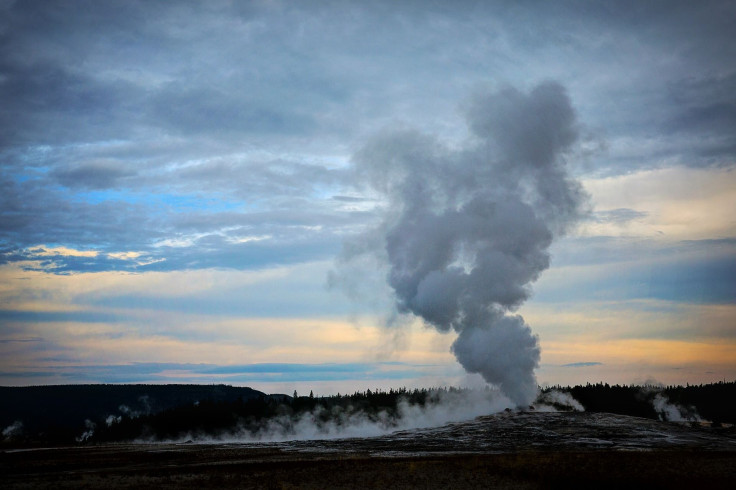Yellowstone's Old Faithful Geyser Stopped Erupting 800 Years Ago And It Could Happen Again
KEY POINTS
- The Old Faithful Geyser stopped erupting for decades due to a severe drought
- The wood samples they found suggested that at some point, trees were able to grow in the area
- Future droughts could cause another "major pause" in Old Faithful's eruptions, researchers said
The famous Old Faithful geyser in Wyoming's Yellowstone National Park might one day stop spewing scalding water and it happened once before.
Old Faithful Geyser is one of the nearly 500 geysers in Yellowstone that attract people from all over the world. In a recent study, a team of researchers found that the famous geyser once experienced a major pause when it did not erupt for several decades.
In the study, recently published in the journal Geophysical Research Letters, researchers examined chunks of petrified wood that were recovered from the area near Old Faithful in the 1950s. What makes the samples rather interesting is that today, the area around the geyser cannot support vegetation because of the scalding hot water spewed from it, which can reach up to 204 degrees Fahrenheit (95.6 degrees Celsius).
The presence of this wood suggests that at some point, trees were able to grow in the area.
When the researchers sent the samples for radiocarbon dating, the results revealed they were all from a period some 600 to 800 years ago. One of the samples even revealed that it grew for 80 years before it was petrified, suggesting that there was a period of about 100 years when Old Faithful stopped spewing hot water.
"It was an 'aha!' moment when they all clustered within a hundred-year period in the 13th and 14th centuries," Shaul Hurwitz, study first author and a geologist at the United States Geological Service (USGS), told Science.
But why did Old Faithful stop erupting then? As it turns out, Old Faithful's period of pause coincides with the severe and prolonged droughts that lasted for several decades toward the end of the Medieval Climate Anomaly. Because of the drought, the geyser wasn't able to erupt and this allowed the growth of some drought-tolerant trees, scientists said, adding that it could happen again in the future.
"Climate models project increasingly severe droughts by mid‐21st century, suggesting that geyser eruptions could become less frequent or completely cease," the researchers wrote.
The time between Old Faithful's eruptions has extended in the last decades. From the 60-65-minute interval between eruptions in the 1950s, the average time has lengthened to 90 to 94 minutes between eruptions since 2001, during what's known as the "Turn-of-the-Century" drought, the researchers said.
"If eruptions of OFG and other geysers become less frequent or completely cease, visitors will need to spend more time waiting for geyser eruptions, or possibly not see any at all," the researchers wrote.

© Copyright IBTimes 2025. All rights reserved.






















